Patience, Silence & Observation – Practical Tips to Reducing Stress When Handling Cattle
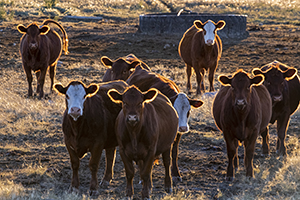
Many farmers truly enjoy working cattle but for some producers (and perhaps their family members) sorting and processing cattle may not bring out the best in everyone. The good news is reducing stress is entirely possible. In many cases, inexpensive changes or tweaks can benefit herd – and family – dynamics.

Joseph Stookey, PhD, Professor Emeritus with the Western College of Veterinary Medicine at the University of Saskatchewan, dedicated his career to studying animal behaviour and has a special interest in looking at ways to reduce stress during cattle handling.“We all work cattle and can get them from Point A to Point B but do you do it as good as you can?” Stookey asks. “If you want to get better at handling cattle, you can do that,” he says. “Find someone who is better than you and watch and learn from them,” Stookey adds.
The benefits of minimizing stress for beef cattle are wide ranging. When cattle are upset, you don’t necessarily see what’s going on inside, Stookey says, but fear is a big trigger for cortisol releases which can potentially lower conception rates. He adds that producers put a lot of effort into many areas of production, but when rough handling occurs or farmers miss an opportunity to minimize fear in their cattle, that work can be negated.
Spencer Yeo, a cow-calf operator who recently relocated from Prince Edward Island to Nova Scotia, says reducing handling stress has been positive for his animals and his bottom line. “Overall, you’re managing your herd a little more and a little better and that ultimately shows up on the balance sheet,” Yeo says. He has been preconditioning his calves prior to marketing them and uses nose flaps for a two-stage weaning program. “You aren’t losing any weight on your calves, and if it’s a lower stress situation, cows have a bit of a memory,” Yeo explains. “If they have a negative experience with someone, they won’t want to do it again, but if it’s not a bad process for them, then you don’t have a rodeo next time.”
Stookey agrees that cattle are trainable and each time they are handled can be a teaching experience. “Cattle have great spatial memory. They know the ways in and out and can learn the way through a chute or the escape if you allow it,” he says.
Handlers can learn too. Craig Lehr, a farmer and rancher near Medicine Hat, Alberta says over the years he has seen both spectrums of cattle handling. He says even if producers have top notch facilities, there are still times that things don’t go well. “If you can remain calm and work through the rough patch, things get better,” Lehr says. “If you begin yelling and screaming, the cattle become stressed and agitated and harder to deal with,” he says, adding things won’t get back on track if you don’t remain calm.
Silence is golden
Stookey’s biggest tip to reduce handling stress is free and fairly easy to implement – stay quiet. “No talking, no yelling, no chatting,” he says. “Those things we do at the front of the head gate make it a harder job at the back end,” he says. Some of his previous work demonstrated that cattle showed more stress when exposed to “people” noise than when simply exposed to gates clanging and banging. “Save the visiting until it’s over.”
Yeo has a similar philosophy. “My rule when working cattle is no whooping or hollering,” he says. “You don’t raise your voice,” he adds, and says that expectation applies to others as well. Stookey reiterates that and says whether it is a trucker or a well-intentioned neighbour helping at a branding, the owner has to set the tone for cattle handling at their farm. “If it’s your own place, you have the right and ability to say hey, that’s not how I do that here,” says Stookey.
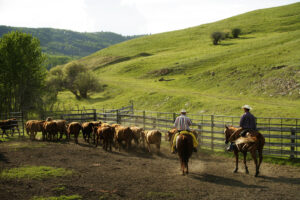
Do you see what I see?
Yeo says observation is the key to working with and adjusting what you have. “Every time you work cattle, in whatever configuration you might have at present, just watch the cattle,” he says. “All cattle aren’t the same, but see if there’s a pattern,” Yeo describes. “Watch where the hang ups are and see what you can do to remedy that,” he says.
Lehr finds it is better to work with the herd and let cattle move in the direction they want to go, rather than fight their natural flow. He adds that learning how to read the behaviour of the herd is one of the most important things you can do. “Never get complacent,” he says. “Depending on the day or the group, you always need to be adjusting your positioning and movements to keep the cattle calm based on how they are responding.”
Stookey says that it is important to watch and understand what the cattle are seeing from their perspective. “Sometimes they can’t see the gate, sometimes they aren’t looking at the gate or notice the path of the gate,” he explains. He adds that producers can benefit from reviewing their set up or taking a critical look at potential problem areas. “But ultimately, it’s people, it’s us, that make it work or make it fail,” he explains.
Facilities management
While expensive facilities are not necessarily the answer, Yeo was able to make use of some program funding to invest in a handling system a few years ago for his farm in PEI. In spite of having a smaller herd, the rewards have outweighed the cost, particularly because labour is hard to find.
“Before that, I was kind of stuck in a rut as far as managing my herd efficiently,” Yeo admits. He notes that now he can easily run the cattle through the chute himself and there are also benefits for preg-checking or other incidental veterinary visits. “I find the vet is keener to come to your place if you have nice, safe working conditions,” he explains. He says the right facilities make the job less demanding. “You’re not exhausted at the end of the day. If everything flows smoothly and you’re working from the outside of the chute, it takes less of a physical toll on you, which is a big plus,” Yeo says.
Yeo did his research and decided on a Bud box-type system. “This was my chance to level up, so I studied my facilities, and watched a lot of YouTube videos on different people working cattle and what worked for them and what didn’t work,” he says. He bought only what he thought he might need but also what would be efficient. “You don’t want to buy a whole bunch of stuff only to find you don’t need all of it.”
Stookey says sometimes the simplest facilities are the best. After seeing a particular cow-calf sorting pens in practice Stookey adopted a similar effective method where one person can let cows by while nudging calves to duck into an adjacent pen with an entrance too low for the dams to walk in. (See the video). Patience is necessary, however, for things to function best. “Some people are good at it and some people aren’t,” he says. “A little subtle move will stop a calf but allow a cow by. If you over-amplify your movements, you might stop everything,” Stookey says, adding that too much pressure on the back end can also have too many cattle coming at once.
Lehr says they continue to improve their handling facilities every year. Some years, the improvements have been large-scale, like rebuilding or redesigning pens, while other years the improvement may be as simple as fixing a gate to make it easier to latch. “Sometimes changes like relocating a gate, adding another pen, or changing flow pattern can make a big difference,” Lehr explains. He adds that making notes on his phone has helped him to note little fixes that will streamline the job.
Slow is fast
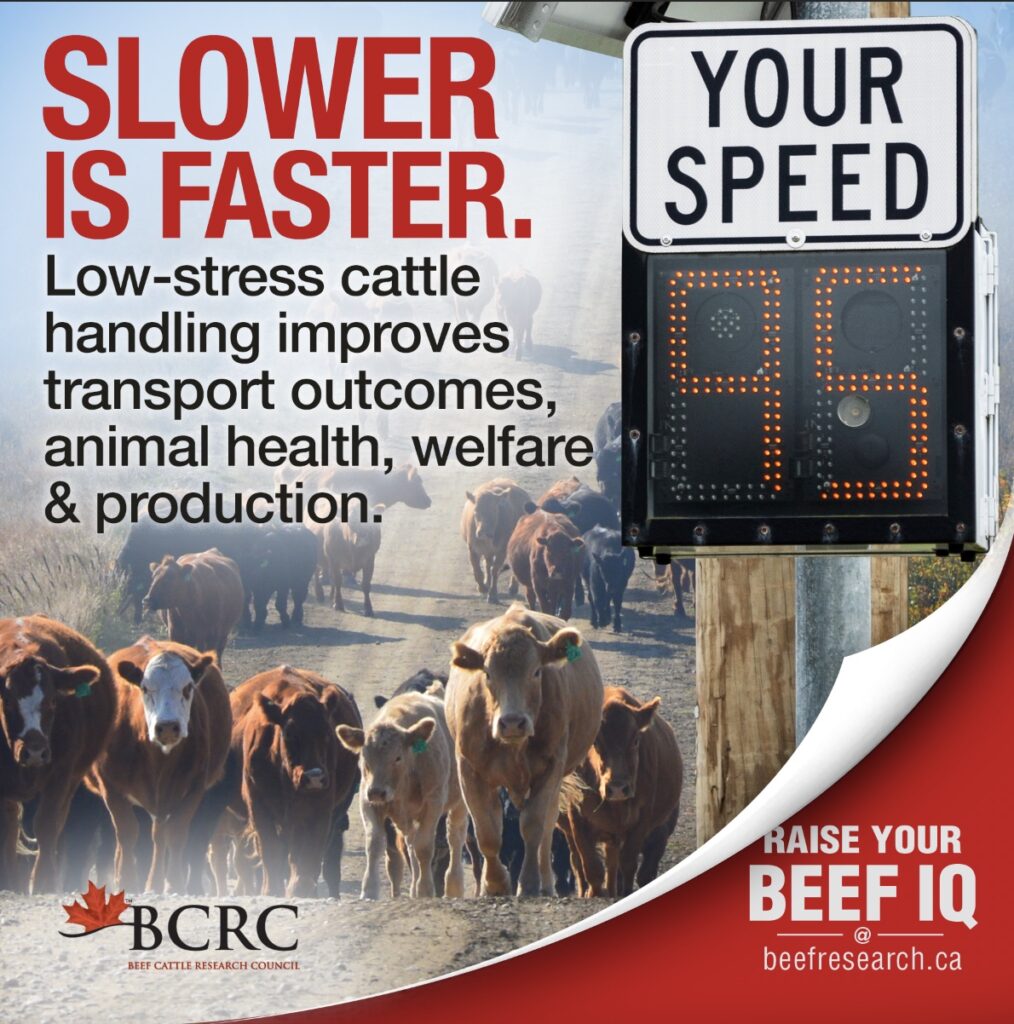
Stookey says that sometimes a perceived barrier to farmers adopting lower stress practices is that they may think it takes longer, but in reality, it’s the exact opposite. For example, if a chute has space for ten cows, but six or eight fit comfortably, it may be more efficient to fill it with fewer head that flow through more quickly. “When you pack them in, it adds stress for cattle and stress for people in the back pen too,” he says.
Lehr finds they have better success at reducing stress when they keep groups small, whether it’s for sorting or processing. “Low-stress handling involves a lot of walking, but it pays off,” he says.
Patience is key when it comes to handling cattle. “I think it puts you in a better state,” Stookey says and adds that even if things don’t go according to plans, stop, recollect, and take it easy again. Lehr agrees. “A large part of how things will go is within the attitude of the people handling the cattle.”
Top Tips from Producers
Canadian beef producers have a variety of different suggestions for reducing stress when working cattle. Here are a few of their ideas:
- Pat Kunz, a cow-calf and feedlot operator from Beiseker, Alberta, shared a tip via Twitter (@patkunz) saying that transitioning from wood to steel corrals made a big difference. “It also allowed a redesign that’s much better now. Also, I built a walk-through man gate. It’s just a foot or so wide gap in the fence then a short section of fence behind it.” He adds the gate is easy to get through and a lot safer than a traditional gate. “The problem with gates is that they can be quite dangerous. People can get squished easily and you need time to open them. This is way faster and nothing to hit and squish someone.”
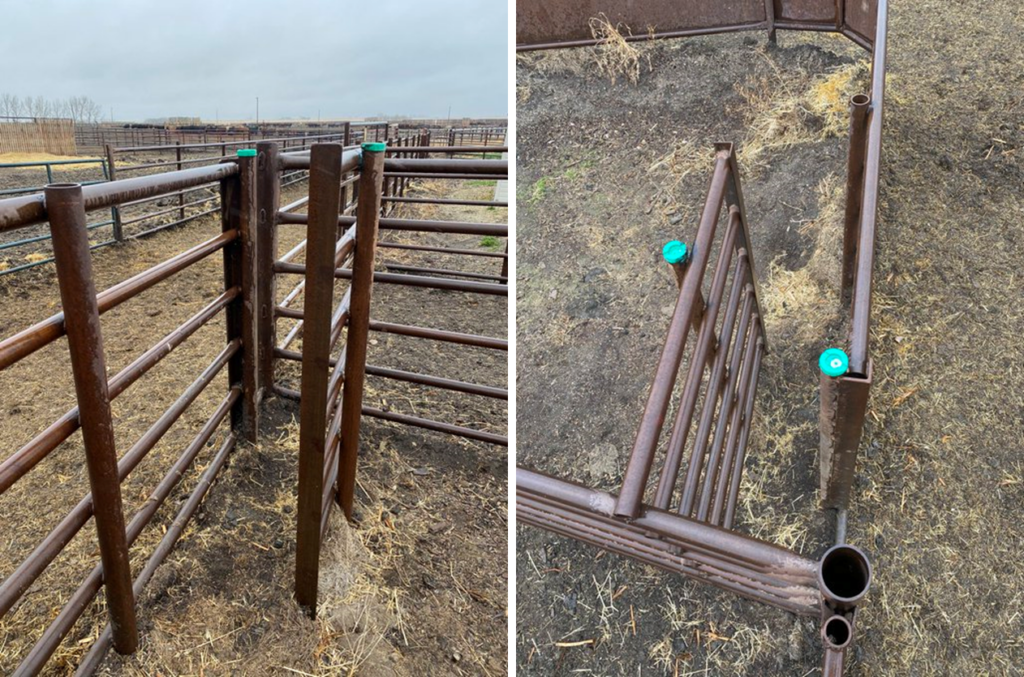
- Brian Harper from Circle H Farms near Brandon, MB (his twitter handle is @Circle_H_Farms) said they added slotted sides to their solid S chute. “Calves move through over twice as easily now because they can see us.” (photo courtesy of Brian Harper, Circle H Farms, Brandon, MB).
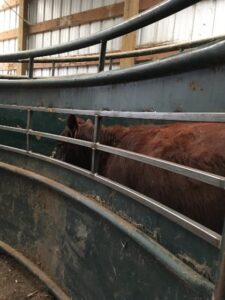
- Livestock operator Lance Neilson from central Alberta (@CattleNeilson on Twitter), suggests holding a flag up in the air when moving cattle up and alley or out of a pen. “They can see the flag and keep moving forward smoothly without trying to look back or pausing. Also, a Bud box. Wouldn’t go back to a tub.”
- Saskatchewan farmer Lorne Luchinski (@lorne_luchinski) says “Let them think about it! The cows, that is. Hard concept for a rammy operator like me but SLOW down.”
- Communication among handlers is key. Kelsey Cartwright, via twitter (@cdnkelsey), says “my brother and I couldn’t help but yell the other evening when trees and wind were major communication barriers while gathering pairs. Afterwards we made sure each other knew we were trying to be heard rather than frustrated. Little conversations like that go a long ways.”
- Cattle producer Jeff Chubb said that to process calves, he built a calf-sized tub that feeds calves toward the calf table, making long days a lot easier. Photo courtesy of @ChubbJeff (Twitter).
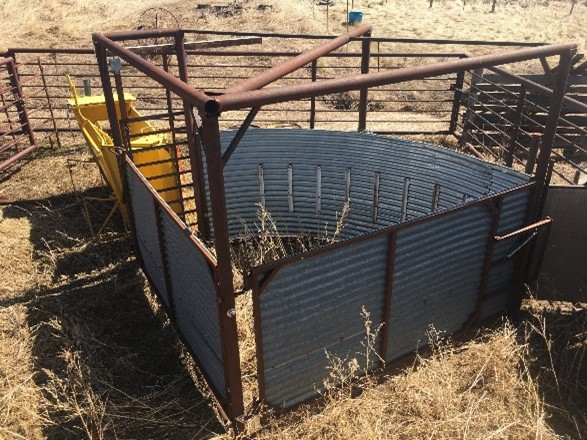
- Matt Zwambag of Bee Zee Acres located near London, Ontario said they upgraded facilities to a tub, scale and working chute inside a barn, as well as metal gates on hinges. He adds they cull the “miserable ones” and also have a rule of no yelling. “Our herd is easier to work with and the big jobs don’t seem so big anymore,” he says via twitter (@bzacres).
Click here to subscribe to the BCRC Blog and receive email notifications when new content is posted.
The sharing or reprinting of BCRC Blog articles is welcome and encouraged. Please provide acknowledgement to the Beef Cattle Research Council, list the website address, www.BeefResearch.ca, and let us know you chose to share the article by emailing us at info@beefresearch.ca.
We welcome your questions, comments and suggestions. Contact us directly or generate public discussion by posting your thoughts below.